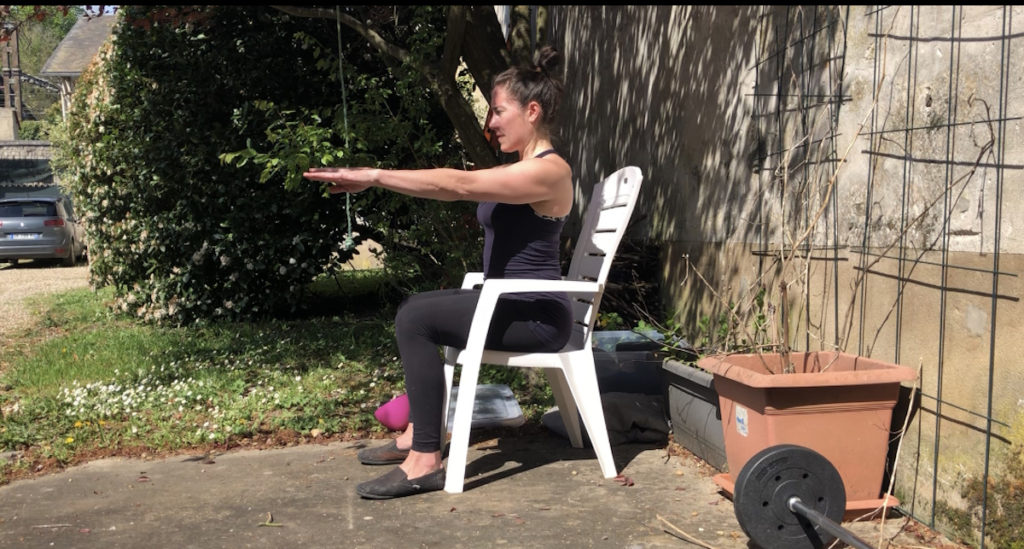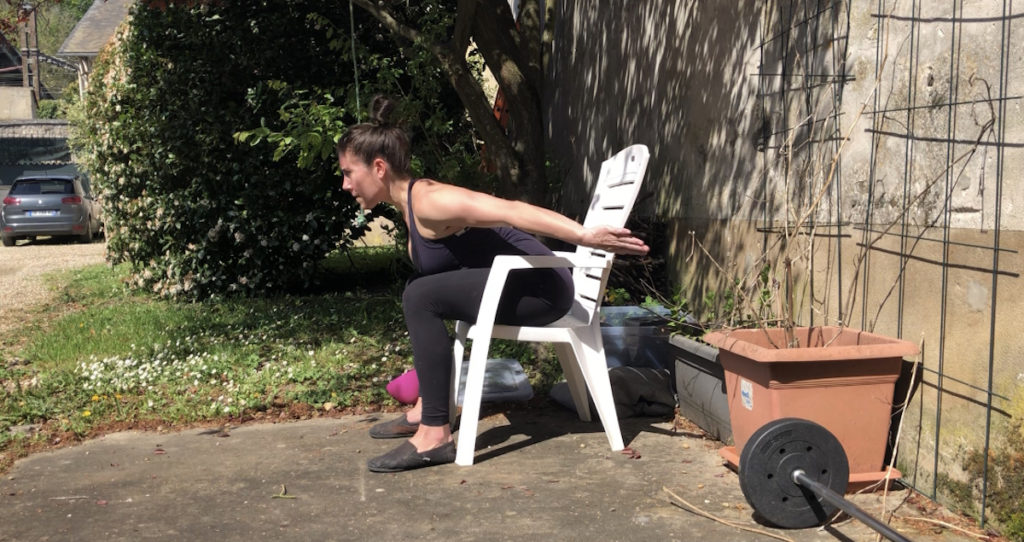So you’re stuck working out in your one car garage that you cleaned out and turned into a makeshift gym two weeks ago. You have a couple heavy dumbbells and kettlebells, you installed a homemade pull-up bar, and nailed together a homemade box. You have been doing a decent amount of strength and conditioning work, but you’re freaking out because you don’t have a barbell and can’t clean and jerk or snatch, and you feel like your explosive power is declining as fast as the stock market.
With a little creativity, this doesn’t have to be the case.
First, let’s consider the definition of power.
Power = force x distance/time
In other words, how much weight you lift, multiplied by the distance you travel, divided by the time it took you to complete the task.
Thus, if you’re still working on your strength and your speed, you will effectively be able to continue to express power. And you can certainly achieve this in many other ways than through barbell clean and jerks and snatches.
Here are 7 exercises to add to your lockdown training program that will help you maintain your speed and power without getting under a barbell.
1. Kettlebell Swings
If you have a heavy kettlebell, basic kettlebell swings are a great way to continue to get you working on your speed and hip extension. You can also experiment with single-arm KB swings if you don’t have a heavy enough KB.
Focus on sending your hips back as far as you can into a deep hinge position, and then exploding from the bottom and squeezing your butt cheeks together to achieve full hip extension.
High-rep KB swings are useful, because as you fatigue, you’ll have to start to really fire those hips.
Start with 3-5 sets of 35-50 reps with one minute rest between sets.
2. Jumping Squats
Even if you have no equipment at all, it’s still possible to work speed and explosiveness.
Jumping squats are an effective tool to get you working on your speed. The idea here isn’t to jump high, but instead to fully extend the hips just like at the top of a clean or a snatch, and then pull your body down into a squat as fast as you can. The goal is that your feet don’t hit the ground until your hips are already below parallel.
Try this in your warm-up: 20 seconds on, 20 seconds off x 5 intervals. How many squats can you complete in 20 seconds?
Another option to try are weighted jumping squats. I like putting one dumbbell on each of my shoulders. Again, focus on full hip extension, all the while avoiding floating in the air, and then see how quickly you can pull your hips below parallel.
Start with 5 sets of 10 weighted jumping squats with one minute rest between sets.
If you are really advanced, you can do the same thing with single-leg pistol squats. Keep the reps lower on these.
Try 5 sets of 5 to 8 reps, ensuring you’re getting full hip extension and pulling your hips back into a full-depth single-leg squat.
3. Seated Max Height Jumps
Start seated on a box or a chair. Swing your arms as you would if you were winding up for a max effort vertical jump, and then explode off the box as aggressively as you can.
If you have another box to jump onto, great. If not, explode off the box or chair, jump as high as you can and fully extend your hips, and then drive your knees up to your chest into a tuck jump.
Because these are max effort, it’s best not to do them for time or in high volume.
Five sets of 3 to 5 max effort jumps with a few seconds between each jump, and one minute rest between sets, is all you need.
4. Plyo push-ups
For some upper body power work, try some plyometric push-ups.
Place two heavy objects of equal height on either side of your shoulders, a little wider than where you place your hands for a push-up. Heavy books work well.
Then perform a push-up with your hands inside the books, and explode out of the hole and finish with your hands on the books. For an extra challenge, add your feet. Explode out of the bottom of a push-up as fast as you can and finish with your hands and feet on the books.
Start with 5 sets of 6-10 reps depending on your strength and explosive capacity.
5. Broad Jumps
One of the biggest mistakes I see athletes make when going for a broad jump for distance is forgetting to jump high as well as long.
Picture what a world-class long jump looks like: Those athletes soar, not just incredibly far, but they also get quite a bit of height.
These are similar to the seated box jumps for max height. Keep the reps low and focus on 100 percent effort.
5 sets of 3 to 5 all-out max effort broad jumps. Rest as needed between sets.
6. Step-Ups With High Knee Drive
You can do these unweighted, or with two DBs at your sides or in the rack position.
Step onto the box with one foot. Make sure you keep the box at a height where you can move with speed. Once you’re on top of the box, drive the other knee as fast as you can into a high knee position.
Try 3 to 5 sets of 8-10 reps per leg. If you’re able to move with speed, add some weight.
7. Medicine Ball Sit-up Tosses
If you have a medicine ball, medicine ball sit-up tosses are a great way to get your core working overtime as you move explosively.
Start at the bottom of a sit-up about fifteen feet away from a wall or a partner. Place the ball over your head with straight arms. The ball should be resting on the floor.
Then all in one movement, explode to the top of the sit-up, all the while tossing the ball to the wall or your partner.
Note: You should release the ball as you’re sitting up, as opposed to once you’re already at the top of the sit-up position. If you aren’t able to do that, find a lighter ball to throw.
Try 5 sets of 15-20 reps. Rest 1 minute between sets.


